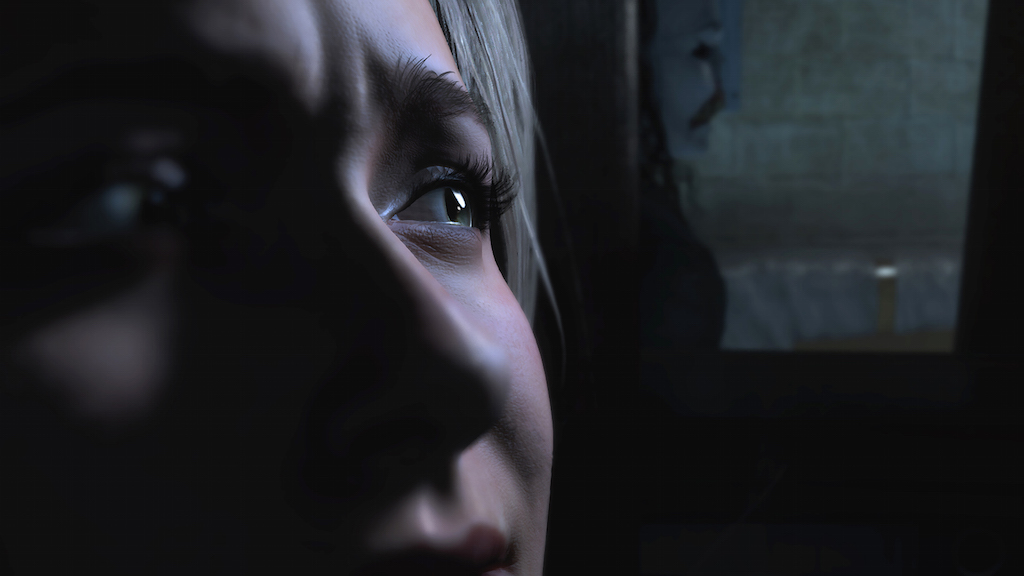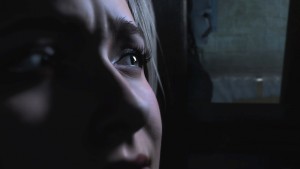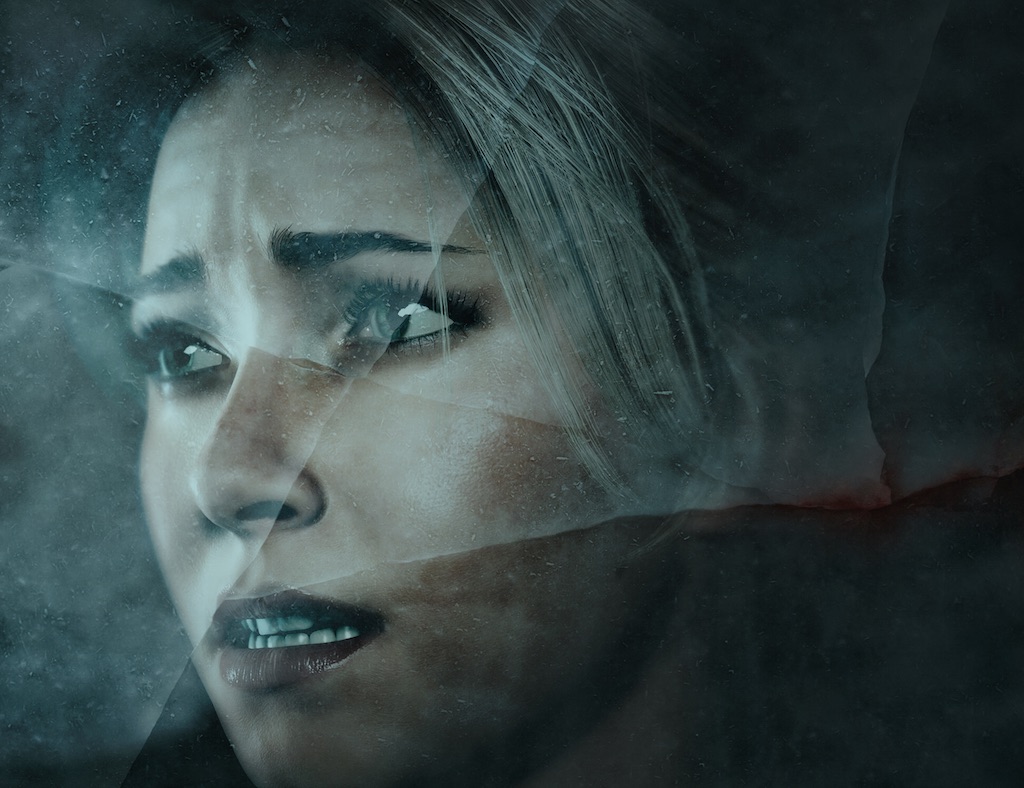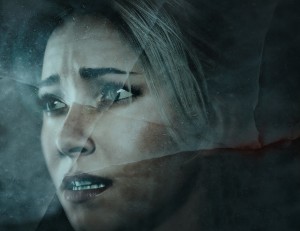Part 2 of our conversation with Until Dawn’s game director and writer where he kindly reacts to some potentially embarrassing situations for his game. How despite the collapsed of the Japanese horror games and after P.T.’s cult surprise there is still room for horror games. How Dragon’s Lair hated QTEs are now used not to punish the player but to improve his feelings. How dark on dark and doing nothing is probably the best to scare the shit out of the player…
Bliss: It’s probably the turn of Until Dawn to take the heat because as with David Cage’s projects (Heavy Rain, Beyond : Two Souls…), weren’t you afraid of the 1983 arcade game Dragon’s Lair syndrome? How do you justify this kind of make a choice /QTE gameplay to the more hardcore and touchy gaming population?
Will Byles, Creative Director Supermassive Games: You’re right, QTEs are contentious (laughs), and it is kind of a Dragon’s Lair press a button get the right timing, get the next cut etc. But we haven’t used it in the same way up fully through out the game by any means. We used the QTEs… very specifically, under high pressure, high time pressure events. And what we don’t do is we make sure we don’t have any punitive QTEs that come from nowhere. If you play the game and suddenly a QTE comes up, it’s because there’s a problem that needs you to go « Oh shit! ». That’s the feeling we want you to have, that panicky moment. And the first one when there has never been one in the game, it will be slow, it won’t be overly punitive like I said.
Bliss: And you made some improvements with the QTEs with sounds alerts on screen and on the DualShock4… How deep did you have to go to ease the process and still keep it as a challenge?
Will Byles: Well, the big differences are the fail state. If you fail it’s not like a restart, it’s like « Okay, I’m gonna go to the next bit ». And when you fail one in certain positions, these will only come off while you were made fully aware that they are coming and that in a couple of times you could die.
Bliss: Still, you’re not afraid that some gamer might want to start the game again when they « don’t do right » some QTEs because, without further information, they might think they are doing « wrong » and maybe missing the main event?
Will Byles: The thing is… they can’t (laughs). He might try but… That’s part of the story telling. Some people might think it’s a bad idea, some that it’s really good. It’s always a risk. There will be people that will have no patience and may just get lost. But I think that if people know that it is not the case, if we say up front that sometimes doing nothing is the best thing, that because of the butterfly effects what feels like a wrong decision or a right decision has an impact on the story and drama either way. With the clues, the premonitions and things like that there is enough information in the game that if you engage with it, it will allow you to hold this stuff and past it.
Bliss: As any novelist or screen writer would certainly agree, it is already very difficult to write one straight good story. So how do you expect to write such a good story and keep characters coherence for instance with so many branching and alternatives story lines? I’m guessing : Contemporary TV show school of writing? Maybe there is only one good story in your game but not 10 or 12…?
Will Byles: We think there are a lot of stories. The events of the night from dusk till dawn is One night. It will always be that one night, regardless of how you go thru that story. They are things in play that will always happen that are part of the story but not necessary a part of your story because you might… die, so it won’t be part of his story but it will be the part of another character’s story. They are not hundreds of individual set put narratives. When one of them is about a man that goes off to find a horse, you know, and win the girl and another one is about going to Hawaï. In here they’re all part of the same story, the same structure and that’s the kind of core of the night. But the story you play will be the story that involves maybe somebody dying very early on, or somebody loosing an arm, or catching fire… So all those things are all parts of that structure. We think we got a good balance on how that works but…
Bliss: But a story is about rhythm, right? And you break the rhythm if we take one branch over the other. Or maybe every branch falls on the same rhythm patterns? The events may be different but the emotional beat may be the same?
Will Byles: Absolutely, and the rhythm, like you said, is more like TV shows. For every hour they is an absolute structure, an emotional structure we try to do with fear, relationships, multiple characters… For me a story is not about the things that happen, it’s about relationships.
Bliss: But video games ARE about what is happening, acting on, doing things. We, as a all, have a hard time to create and live emotions in video games without going thru this early basic need of interactive action…
Will Byles: Exactly, and it’s hard, and, like I said, we had a lot of arguments early on saying: I want the player to understand this and this but not what is coming later. Not because I wanted to be smart or anything, but because I think it’s more satisfying for you to find that stuff on your own as an audience in a way… Like in the Sixth Sense http://www.imdb.com/title/tt0167404/ movie you know when you get to the end of a story and you say: « Alright I understand now. They’re a all bunch of things that look different now ».
Bliss: Like a final twist?
Will Byles: It’s not just the twist, it’s the perspective. I saw from this perspective, and now I’m sitting from this perspective which has changed not only the story – because the things you saw are identical – but what you understand now is very different. You can only do that if you have a narrative that is not everything at every stage, which is traditionally the way games do it.
Bliss: So you play with the player frustration that then goes back and starts the story again?
Will Byles: Yes!
Bliss: During the 3-4 years of Until Dawn development, the Japanese horror survival games scene collapsed and gave you some opportunity to take the spot with a different horror game. And then came Guillermo Del Toro and Hideo Kojima’s P.T. that is now the reference in the genre. What impact did this « no game » surprise have on the team and development last year?
Will Byles: I genuinely think that there are room for many horror projects because the appetite is there for horror. Like you said, the survival horror has gone down part because it has become just shooters and action games… For me it was frustrating because I loved horror games the Japanese were doing like Fatal Frame. So when something like P.T. comes out suddenly it’s just a : « Oh my God this is amazing! ».
Bliss: You said somewhere that you were confident that a long corridor where nothing happens could be enough to scare people and then P.T. demonstrated this idea fully. Were you happy or frustrated that such a demonstration came before your own Until Dawn?
Will Byles: No no. I think when something is scary it’s a good thing. And you know what was brillant about P.T. is that you go thru a corridor and then another corridor and the fact that it kept going and kept going. It was slow and it got scary, it got very very scary, it got very immersive. I don’t like to use that word because it is irritating but you got so pulled into it. Obviously you get anxious that there might be much scarier project than your own game but that’s my own insecurity (smiles).
Bliss: Did you change something in your own game after seeing PT? Add something or take of something? Did it alter the people working with you? Because when you work on something that is very specific and then comes something so strong from someone more famous…
Will Byles: To be honest, it just reinforced that what we were doing was the good stuff, the corridors and such. They are very hard arguments to have with people during development. People see the game before it’s lit, before it’s done and… nothing happens, so. And we said: « that’s good ». You know people generally want to see an amount of things happening and we went: « No no, this just should be… just nothing. »
Bliss : The Cabin in the Woods movie (co-written by Joss- Avengers- Whedon, ndr)- pretty much killed the teen slasher concept by grasping and swallowing everything at once, don’t you think? At least in theaters. So, maybe now interactive video games will take the first place to go to live a really scary entertainment evening?
Will Byles: You know I think it could. I think there is something more visceral about first person emotion. There’s definitely enough technology now to stop the special effects or the characters of being a barrier to enter. This is the first version of this kind of representation that we have done but it’s going to get better. There will be a game in a few months time that will beat this and another game will come out and people will be stunned. Once those barriers go, then it’s going to be down to budget and desire to make those things. Engines are getting free now, you don’t necessary need to buy or have a very expensive engine and a huge team to make stuff. You can have an idea and put it dramatically, not cheap but not -massively expensive. It seems like some real opportunity coming out, it feels like it’s going to happen. The same with movie making. You can make a movie on an iPhone you know. More people are doing it. Obviously there is the publishing side but as more people are able to do that, I see as a way of the future where, not just movies but… You know movies used that found footage and then the low budget movie indy and then there is higher budget movie. And they all seem to have a place and they all seem to make it on Netflix (laughs), they all get there (laughs). I think Channels will start to come up on game platforms where you can have a horror channel, a drama channel… Sometimes it’s really good to be told a story, you don’t necessary need to engage, sometimes it’s nice to have that narrative. I don’t think one medium will die because of the other.
Part 1…
Will Byles/Until Dawn: Appointment with deaths 1/2
Interview conducted by François Bliss de la Boissière
… in the offices of Sony Computer France in Paris august 24 2015
Message aux lecteurs. Vous avez apprécié cet article, il vous a distrait un moment ou aidé dans vos recherches ? Merci de contribuer en € ou centimes de temps en temps : Paypal mais aussi en CB/Visa avec ce même bouton jaune sécurisé …
Comme dans la rue, pas de minimum requis. Ça fera plaisir, et si la révolution des microtransactions se confirme, l’auteur pourra peut-être continuer son travail d’information critique sans intermédiaire. Pour en savoir plus, n‘hésitez pas à lire ma Note d’intention.






